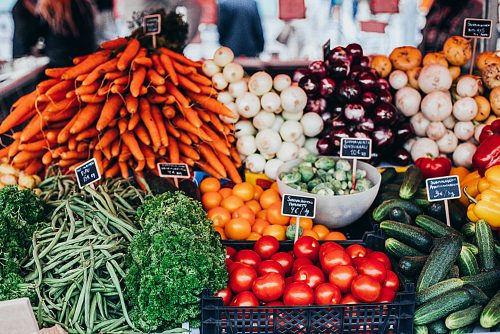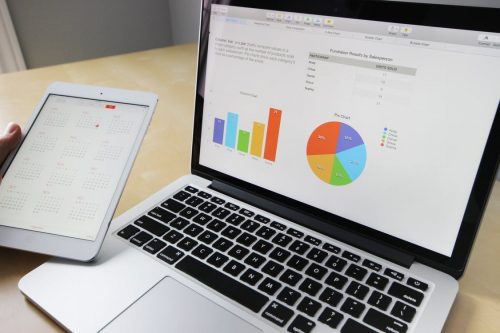Technology Enabled Rapid Response Fresh Supply Chains (Sponsored by FFAR)
TERRa-fresh is an integrated planning and coordination environment that seeks to exploit the new technological realties of the supply chain of fresh agricultural products for the benefit of the growers, the consumers and the environment.

Market Opportunity Discovery: A market opportunity relates to events in which a product is required by consumers at higher levels than the norm and there is a shortage of resources to satisfy such a demand. If these events are identified with enough anticipation to allow the gathering of resources to satisfy this future increase in demand, it can lead to business opportunities. Part of TERRa-Fresh’s purpose and its tools is to identify these opportunities by monitoring demand and price signals for the current and future markets; and make these opportunities available directly to the grower.
Rough Cu t Supply chain planning: The purpose of this component of TERRa-Fresh is to validate the physical and economical feasibility of the opportunity identified by the Market Opportunity Discovery and to assemble the final team to take advantage of the identified opportunity. This validation and definition of supply-market strategy will be based on tactical planning/negotiation tools whose function will be to allocate the identified demand among regions and specific growers represented by the supply-side supply chain articulators. This allocation provides an initial blueprint for the implementation of the supply chain that will connect, as directly as possible the grower with the identified market opportunity.
t Supply chain planning: The purpose of this component of TERRa-Fresh is to validate the physical and economical feasibility of the opportunity identified by the Market Opportunity Discovery and to assemble the final team to take advantage of the identified opportunity. This validation and definition of supply-market strategy will be based on tactical planning/negotiation tools whose function will be to allocate the identified demand among regions and specific growers represented by the supply-side supply chain articulators. This allocation provides an initial blueprint for the implementation of the supply chain that will connect, as directly as possible the grower with the identified market opportunity.

The Marketplace: The marketplace aims to facilitate a fast and quick interaction between suppliers and potential buyers within the market of fresh fruits and vegetables. Offers can be posted by suppliers and requests can be made by buyers. Trading activities are possible between both roles. Suppliers can be either a grower or anyone who is in possession of spot produce and has interest in selling. Buyers can be anyone who has interest in purchasing any available fresh produce spot offer. The role of the platform goes far beyond a regular e-commerce site, since it serves as an interaction and coordination tool between Supplier and Buyer.

Supply Chain Coordination: Traditionally fresh food brokers, wholesalers, shippers and other intermediaries play a critical role in the operation of the supply chains. Some of the activities of these players include identifying market opportunities and filling those market opportunities from the appropriate sources. Currently, these players often rely on logistics agents to identify and contract the most convenient modes of transportation and storage facilities to take the product from source to destination. In the vision of TERRa-Fresh the logistics agents will have an expanded role interacting with the supply chain intermediaries in activities involving planning, negotiation, and implementation of operational programs on behalf of the growers. We call this new agent, the Supply Chain Articulator.
Smart Manufacturing
The objective of Smart Manufacturing is to develop an intelligent, general support system to monitor the overall behavior of a process in real time, in order to predict when changes in the process will occur, understand their causes and potential consequences. Following, identify and implement possible process adjusting strategies that minimize downtime of the system.
Smart Manufacturing Case Study:
- If anomalies in observed clusters are found use of historical manufacturing data to identify the cause of process failure.
- If no anomalies in grouped sub-processes, then we can use historical manufacturing data predict when and where (physical) the machine will fail.
- The previous is following used for prescriptive recommendations.
Hypothesis – “It is possible to detect machine failure through the monitoring of bearings.”
Our Approach:
- Data collection: Develop a strategy and associated measuring system that provides data about the process’ state. More specifically, construct a measuring system to obtain process related data that provides sufficient and reliable information in order to assess the behavior of the underlying system.
- Data Selection: Determine which data streams (sub-processes) of the system provide relevant information for monitoring the behavior of the system.
- Monitoring and Problem Detection: Apply adequate techniques in order to monitor the behavior of the process. These must be capable of detecting when assignable variations within a sub-process occur.
- Diagnostics: Once assignable variations in the data of the monitored sub-processes are detected, its causes and potential effects over the general system must be identified. Ideally, the sub-processes to be monitored will help identifying the underlying causes of these changes.
- Actions to take: Alert about causes and possible effects of assignable variation in the sub-processes. Determine potential actions required in order to bring the sub-processes back into their adequate behavior.
- Intelligent System: Build an intelligent system, capable to learn from the data, detect potential problems and diagnose causes and potential consequences associated to these problems.
Demand Side Management
The purpose of demand-side management is to adjust the energy consumption patterns of an energy user in order to better complement the supply of their electricity provider. There are many techniques for accomplishing this goal. The framework of this research is to develop production plans for industrial energy users that consider the production rates of equipment, satisfaction of demand for products, and process flow restrictions in order to make decisions that results in minimal energy-cost. With such tools, energy users can become financially incentivized to aid their energy service providers in building a smarter, more resilient energy grid.

